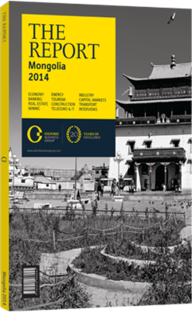OBG talks to John Lee, President & CEO, Prophecy Coal

Interview: John Lee
What needs to be done to boost public-private partnerships (PPPs) in the energy sector?
JOHN LEE: There is a preliminary legal framework for PPP projects, although it is missing details. The concept is still quite new and Mongolia is only starting to receive attention and foreign investment for PPP projects. A lack of examples to follow, added to the election period that we have recently ended, has prevented the new government from focusing on energy projects.
On the private side, due to this lack of previous examples to rely on, companies are cautious and more reluctant to sign on a PPP project for the first time. There is goodwill on the government side and the private side to advance, and we have seen examples of successful PPP projects being implemented. However, it will take time before we see all sectors using this model to finance large-scale projects in Mongolia.
How is the country meeting energy demand while mitigating the affects of coal-fired power plants?
LEE: There has been a great effort in providing greener solutions to energy problems; however, the applicability of a thermal power plant project should really be evaluated on a case-by-case basis. If a country can afford more expensive green solutions, then by all means it should go ahead with them.
In the case of Mongolia, however, given the country’s growing energy demand, there is no more reliable, affordable or faster solution than a thermal coal-fired power plant. In order to meet this urgent growing demand, and given the extreme weather conditions that this country experiences during the winter, there is a strong need for a stable energy supply to be provided through coal-fired power plants. This holds true not only for the sake of the general population, but also to power the mining industry, and to power the high value-added industries of copper, copper smelters and cement factories. Additionally, there have been several developments that reduce the impact of coal power plants, which makes them much cleaner and more efficient than they were before. This is the path to follow to control the environmental impact of a growing number of coal-fired power plants in Mongolia.
To what extent can coal-to-liquid (CTL) technologies be successfully implemented in Mongolia?
LEE: CTL is not a particularly efficient process at this moment, as much of the coal used during the process is actually wasted. It also requires large amount of water and energy, which right now poses a challenge in Mongolia. We also have to take into account that CTL projects require high capital expenditures in order to be commercially viable and leave a large carbon footprint to produce petrol. There is proven technology, but the focus for Mongolia should be to focus on the generation of power. It is definitely an area that has great long-term potential and should be followed closely, but in terms of priority, practicality and appropriateness of timing, we feel that providing a base for reliable power plants to be built should be the first step for this country before moving on to other types of development.
What is your assessment of Mongolia’s potential to develop as a regional leader in renewable energy and what are the challenges that it may face?
LEE: There is tremendous potential, especially for wind, which is probably a bit more advanced than other renewables. Much of the wind power generated in China is coming from the Inner Mongolia region, but the wind does not originate there. It originates in Mongolia itself. Mongolia therefore has tremendous potential to be a great alternative energy provider to China.
The challenges include infrastructure, attracting investment and having a sufficient amount of expertise in this field. Mongolia needs to provide a stable investment climate that protects investors, whether foreign or domestic, for the long haul. These energy projects sometimes have a payback period of 10 or 15 years, which makes a stable investment environment a prerequisite to their successful implementation.
You have reached the limit of premium articles you can view for free.
Choose from the options below to purchase print or digital editions of our Reports. You can also purchase a website subscription giving you unlimited access to all of our Reports online for 12 months.
If you have already purchased this Report or have a website subscription, please login to continue.

